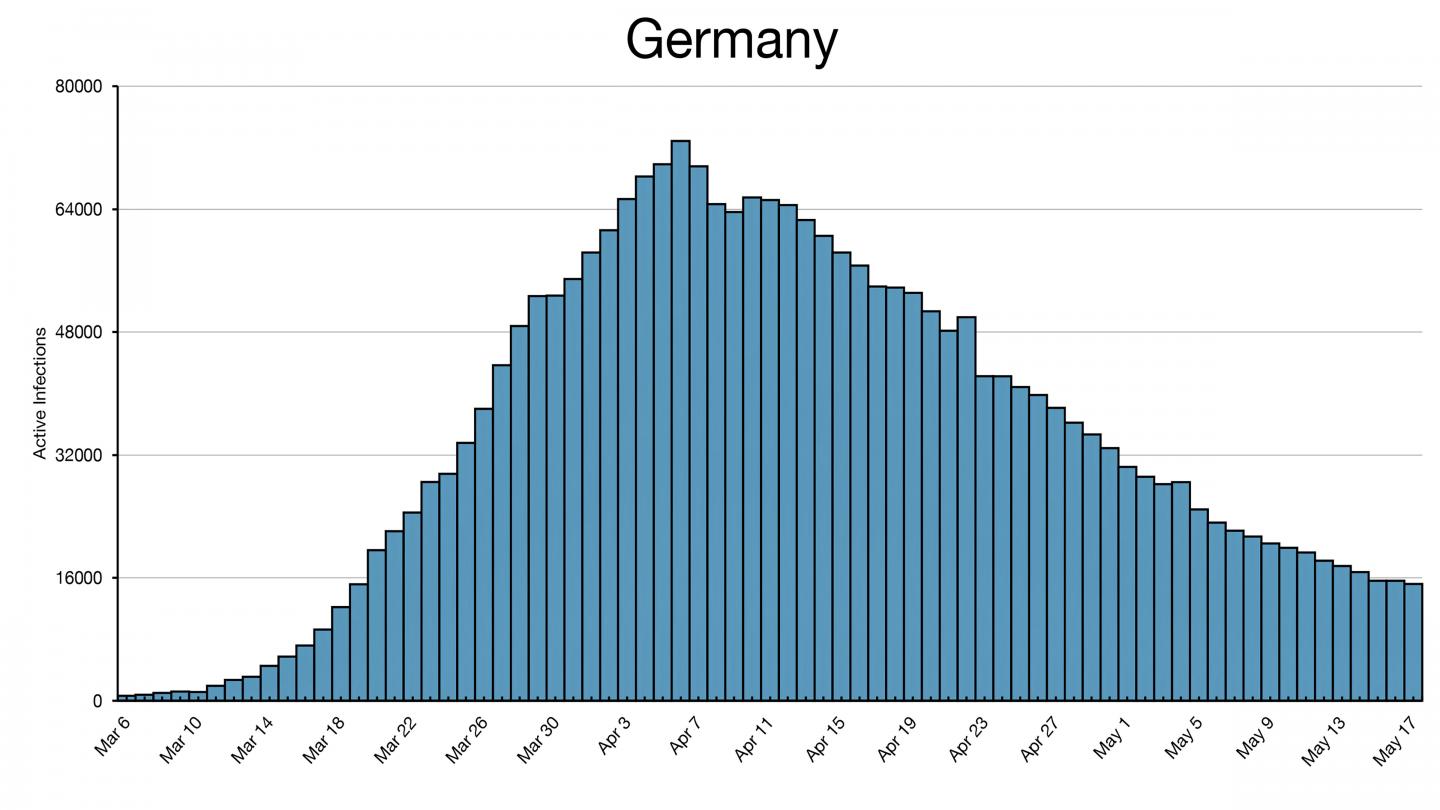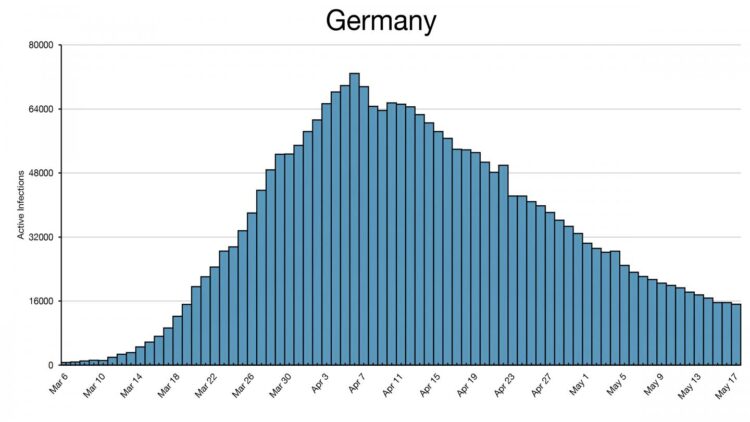Forecasting cannot foresee COVID-19 infection rates peaking or plateauing.

Credit: Joseph Lee McCauley
WASHINGTON, November 3, 2020 — During the first months of the COVID-19 pandemic, Joseph Lee McCauley, a physics professor at the University of Houston, was watching the daily data for six countries and wondered if infections were really growing exponentially. By extracting the doubling times from the data, he became convinced they were.
Doubling times and exponential growth go hand in hand, so it became clear to him that modeling based on past infections is impossible, because the rate changes unforeseeably from day to day due to social distancing and lockdown efforts. And the rate changes differ for each country based on the extent of their social distancing.
In AIP Advances, from AIP Publishing, McCauley explains how he combined math in the form of Tchebychev’s inequality with a statistical ensemble to understand how macroscopic exponential growth with different daily rates arise from person-to-person disease infection.
“Discretized ordinary chemical kinetic equations applied to infected, uninfected, and recovered parts of the population allowed me to organize the data, so I could separate the effects of social distancing and recoveries within daily infection rates,” McCauley said.
Plateauing without peaking occurs if the recovery rate is too low, and the U.S., U.K., and Sweden fall into that category. Equations cannot be iterated to look into the future, because tomorrow’s rate is unknown until it unfolds.
“Modelers tend to misapply the chemical kinetic equations as SIR (Susceptible, Infectious, or Recovered) or SEIR (Susceptible, Exposed, Infectious, or Recovered) models, because they are trying to generate future rates from past rates,” McCauley said. “But the past doesn’t allow you to use equations to predict the future in a pandemic, because social distancing changes the rates daily.”
McCauley discovered he could make a forecast within five seconds via hand calculator that is as good as any computer model by simply using infection rates for today and yesterday.
“Lockdowns and social distancing work,” said McCauley. “Compare Austria, Germany, Taiwan, Denmark, Finland, and several other countries that peaked in early April, with the U.S., U.K., Sweden, and others with no lockdown or half-hearted lockdowns — they’ve never even plateaued, much less peaked.”
He stresses that forecasting cannot foresee peaking or even plateauing. Plateauing does not imply peaking, and if peaking occurs, there is nothing in the data to show when it will happen. It happens when the recovery rate is greater than the rate of new infections.
“Social distancing and lockdowns reduce the infection rate but can’t cause peaking,” McCauley said. “Social distancing and recoveries are two separate terms within the daily kinetic rate equations.”
The implication of this work is that research money could be better spent than on expensive epidemic modeling.
“Politicians should know enough arithmetic to be given instruction on the implications,” McCauley said. “The effect of lockdowns and social distancing show up in the observed doubling times, and there is also a predicted doubling time based on two days, which serves as a good forecast of the future.”
###
The article, “Pandemic infection rates are deterministic but cannot be modeled,” is authored by Joseph Lee McCauley. The article will appear in AIP Advances on Nov. 24, 2020 (DOI: 10.1063/5.0015303).
After that date, it can be accessed at https:/
ABOUT THE JOURNAL
AIP Advances is an open access journal publishing in all areas of physical sciences–applied, theoretical, and experimental. The inclusive scope of AIP Advances makes it an essential outlet for scientists across the physical sciences. See https:/
Media Contact
Larry Frum
[email protected]
Related Journal Article
http://dx.





